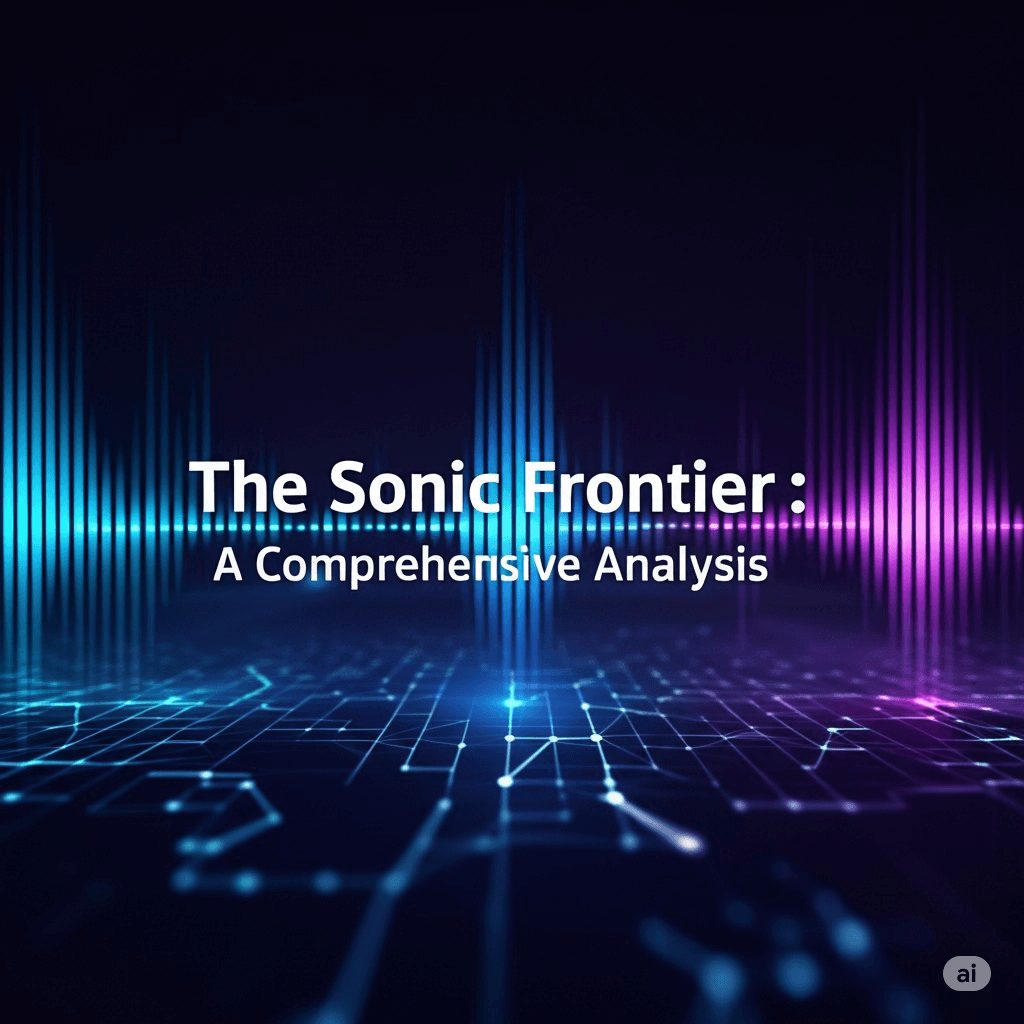The Sonic Frontier: A Comprehensive Analysis of State-of-the-Art Voice Cloning Technologies in 2024-2025
Table of Contents
- The Modern Voice Cloning Ecosystem
- Architectural Deep Dive
- Advanced Capabilities and Challenges
- The Counter-Offensive: Security and Defense
- Evaluation Landscape
- Ethical and Legal Frontiers
- Synthesis and Future Trajectories
The Modern Voice Cloning Ecosystem: Taxonomy and Architectures
The field of artificial voice generation has undergone a profound transformation, moving from rudimentary speech synthesis to the highly sophisticated domain of voice cloning. This technology, capable of replicating a specific individual's vocal characteristics with startling accuracy, is driven by rapid advancements in deep learning.
Defining the Field: From Speaker Adaptation to Zero-Shot Cloning
Loading diagram...
Key Definitions:
-
Voice Cloning: The process of replicating a specific person's voice using a TTS system, preserving unique speaker characteristics such as timbre, prosody, and accent.
-
Speaker Adaptation: Fine-tuning of a pre-trained, multi-speaker TTS model using moderate amounts of target speaker data.
-
Few-shot Voice Cloning: High-quality cloning using minimal reference audio (seconds to 5 minutes).
-
Zero-shot Voice Cloning (ZS-TTS): Cloning from a single, short audio utterance without model fine-tuning.
Core Generative Architectures
Loading diagram...
Architectural Deep Dive into State-of-the-Art Generative Models
The current landscape is characterized by two primary trajectories: capability scaling (massive models for peak performance) and deployment scaling (efficient models for real-time applications).
The Autoregressive Revolution: Scaling Data and Capability
Loading diagram...
Key Innovations:
- CosyVoice 3: 100-fold data increase, supervised multi-task tokenizer, reinforcement learning optimization
- MiniMax-Speech: Joint speaker encoder training, Flow-VAE hybrid, superior expressiveness
- HAM-TTS: Hierarchical modeling with latent variable sequences for consistency
Efficiency-Focused Models: Pushing to the Edge
Loading diagram...
Comparative Analysis of SOTA Models
| Model | Parameters | Architecture | Key Innovation | Target Use Case |
|---|---|---|---|---|
| CosyVoice 3 | 1.5B | LLM + Flow Matching | DiffRO, massive scale | Professional production |
| MiniMax-Speech | N/A | AR + Flow decoder | Intrinsic zero-shot | High expressiveness |
| HAM-TTS | N/A | Hierarchical AR | LVS guidance | Consistent synthesis |
| Seed-VC | N/A | Diffusion Transformer | Timbre shifter | Voice conversion |
| MobileSpeech | 207M | Non-AR FastSpeech2 | Parallel SMD | Mobile deployment |
| SupertonicTTS | 44M | Flow-matching | Ultra-compression | Edge computing |
Advanced Capabilities and Persistent Challenges
Beyond Timbre: Cloning Paralinguistic Features
Loading diagram...
Key Challenges:
- Conversational Speech: Models struggle with spontaneous behaviors like natural pauses and laughter
- Emotion Cloning: Performance drops when text sentiment doesn't align with audio prompt emotion
- User Control: Abundance of granular controls leads to decision fatigue and poor user experience
The Bias Dilemma: Linguistic Privilege and Digital Exclusion
Loading diagram...
The Counter-Offensive: Deepfake Detection and Proactive Defense
The Detection Deficit
Loading diagram...
Proactive Defense Strategies
Loading diagram...
Comparative Defense Mechanisms
| Defense Method | Type | Mechanism | Advantages | Limitations |
|---|---|---|---|---|
| AudioSeal | Watermarking | Localized embedding | Fast detection, edit-robust | Requires source integration |
| VoiceCloak | Perturbation | Speaker embedding disruption | Diffusion-specific | Limited architecture coverage |
| SafeSpeech | Perturbation | Universal SPEC | Broad compatibility | Quality vs. protection trade-off |
| VoiceMark | Watermarking | Imperceptible marking | High robustness | Processing overhead |
The Evaluation Landscape: Benchmarking and Datasets
Modern Dataset Categories
Loading diagram...
Evaluation Metrics Framework
Loading diagram...
Key Datasets Overview
| Dataset | Size | Purpose | Key Features |
|---|---|---|---|
| VCTK | Multi-speaker | Foundation training | Clean, read-aloud speech |
| ASVspoof | Varied | Anti-spoofing | Synthetic vs. real classification |
| CoVoC | 100 hours | Conversational cloning | Spontaneous speech patterns |
| Emilia | 101k hours | Large-scale training | Multilingual, in-the-wild |
| Deepfake-Eval-2024 | 56.5 hours | Real-world detection | Social media deepfakes |
| CV3-Eval | Varied | Zero-shot evaluation | Authentic reference speech |
Ethical and Legal Frontiers
The Consent and Privacy Framework
Loading diagram...
Legal Landscape Challenges
Loading diagram...
Industry Self-Regulation
Common Safeguards:
- Strict Consent Protocols: Explicit permission and clear intent statements
- Ethical Sourcing: Direct artist collaboration, fair compensation
- Content Moderation: Active monitoring for malicious use
- Technical Guardrails: Watermarking, transparency labels
Synthesis and Future Trajectories
Consolidated Insights: The State of 2025
Loading diagram...
Projected Research and Development Trajectories
Loading diagram...
Recommendations for Key Stakeholders
For Researchers and Academia
- Prioritize Bias Mitigation: Focus on underrepresented accents and languages
- Develop Holistic Evaluations: Move beyond simplistic metrics to real-world robustness
- Focus on Interpretability: Make models more transparent and understandable
For Developers and Industry
- Adopt Security-by-Design: Integrate proactive defenses by default
- Champion Granular Consent: Implement strict, transparent consent protocols
- Lead on Transparency: Clearly label all synthetic media
For Policymakers and Regulators
- Create Purpose-Built Legislation: Establish vocal likeness as protected biometric data
- Fund Public-Interest Technology: Support detection research and public awareness
- Foster International Cooperation: Establish global norms and standards
Conclusion
The state of voice cloning in 2025 represents a pivotal moment where immense technological capability meets profound societal responsibility. As we stand at this sonic frontier, the path forward requires coordinated effort across all sectors to ensure that this transformative technology serves humanity's best interests while protecting against its potential for harm.
The technology has matured beyond novelty to become a potent force capable of reshaping industries and human communication itself. The challenge now lies not in what we can build, but in how we choose to build it—with security, equity, and human dignity at the forefront of every decision.
